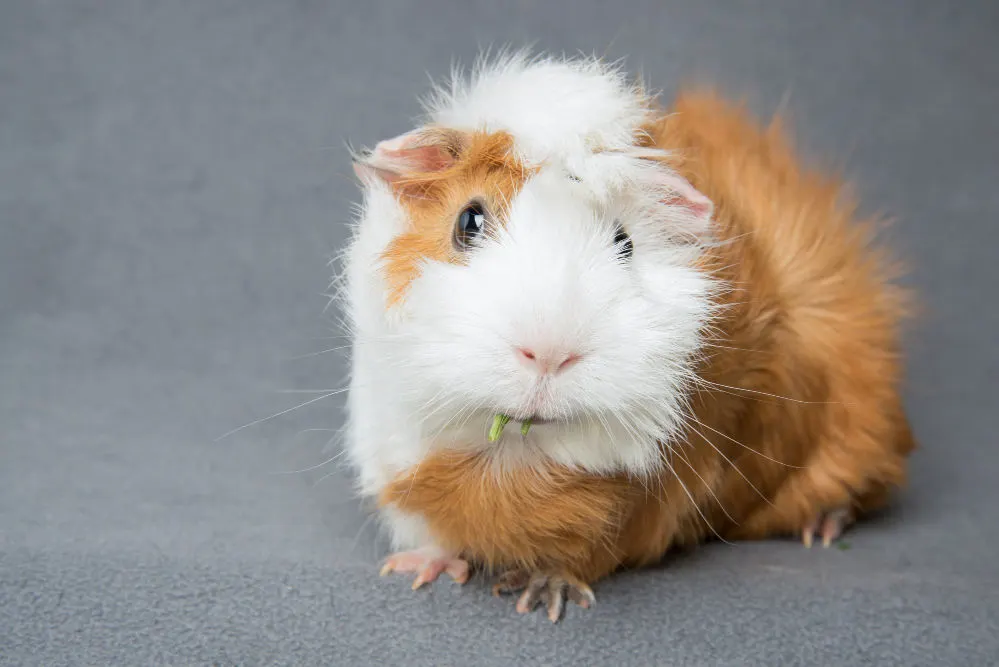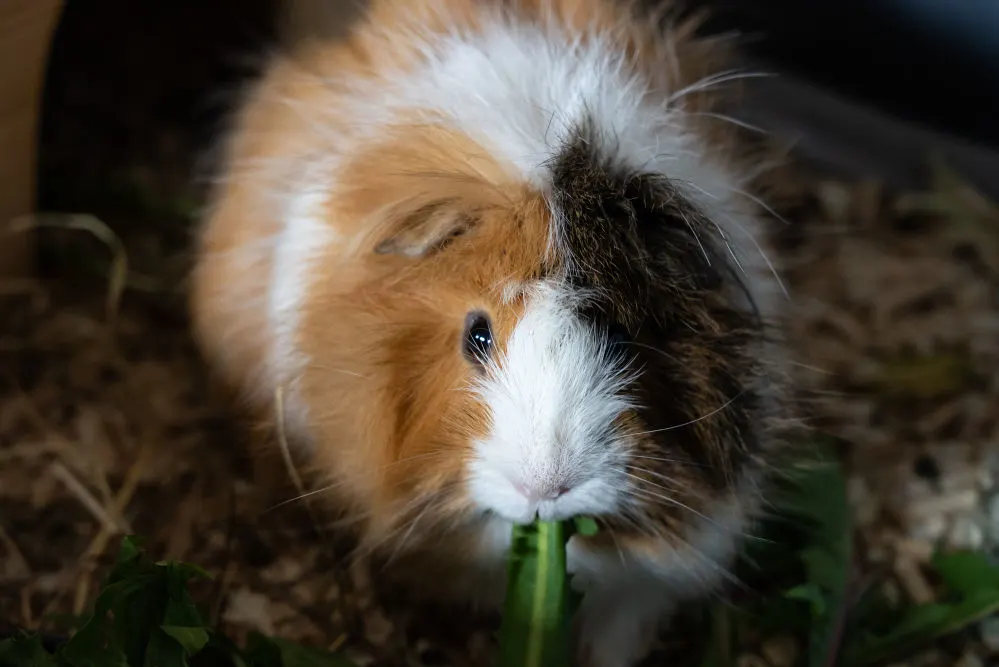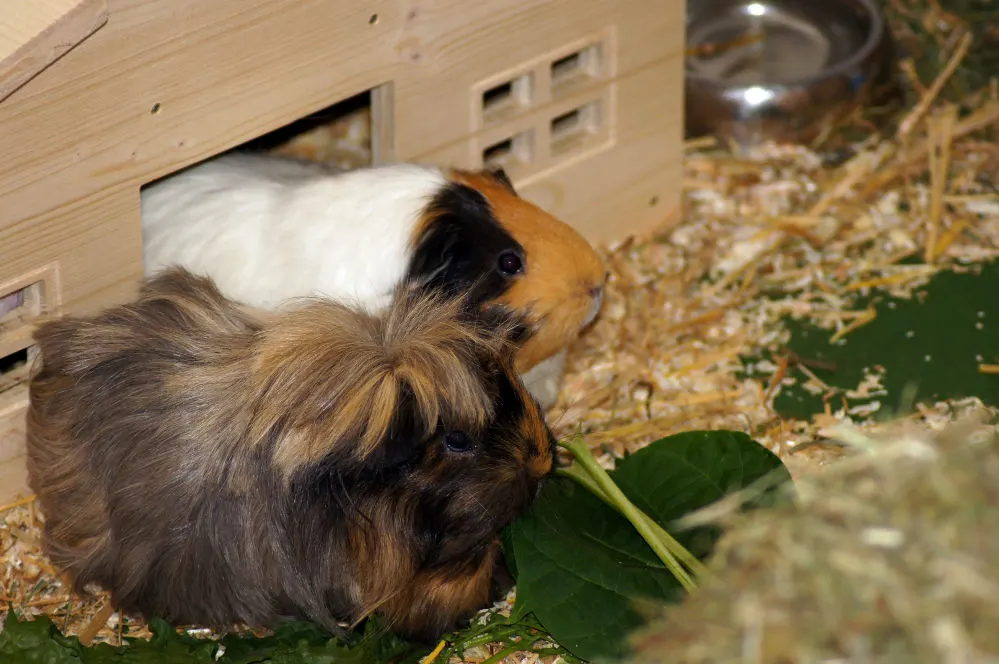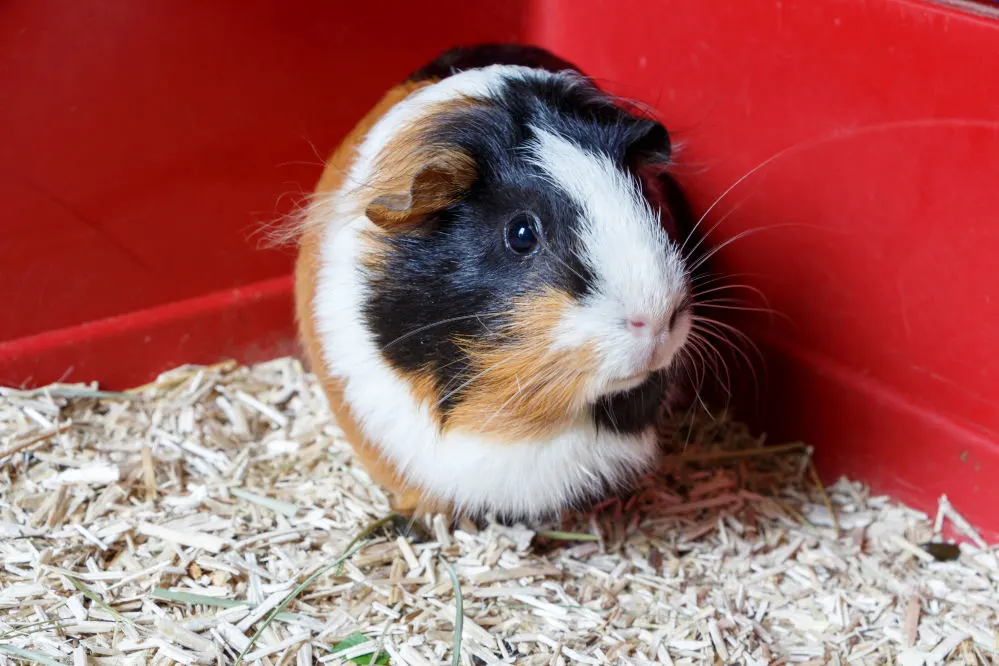Much like humans, guinea pigs have specific dietary requirements that need to be met. To diversify their meal plan, you’ll need to provide fruits and vegetables, like tomatoes. But can guinea pigs eat green tomatoes?
After all, they’re a fruit and should be nutritious, so why not feed them this? As a guinea pig parent, you may already know that these small animals need Timothy hay, grass, leafy greens, and other daily vegetables to provide fiber for their digestive system. As great as this diet is, that alone is boring. Why not spice things up and treat your cute friend to new food like green tomatoes?

Well, you need to think of a few things first. Is it safe, and are there associated benefits (or risks) with feeding guinea pigs green tomatoes?
It’s time to find out.
What are green tomatoes?
While this may sound silly, please don’t feel bad for asking it. You can bet that others are also wondering the same thing.
If you want to be basic about it, green tomatoes are tomatoes that are, well… green. But that doesn’t completely answer the question. Green tomatoes are types of tomatoes that aren’t fully ripe. They taste different from ripe tomatoes, as they have a higher acid level, and therefore, a more tart taste. Plus, they’re firmer than plain red tomatoes and sometimes have a crunchy texture.
That said, not all green tomatoes are unripe. There are two types of green tomatoes that exist. You’ve learned about the first one. The second are those that are naturally green even when fully ripe, such as some types of heirlooms, Artisan Green Tigers, and Cherokee Greens. These ripe green tomatoes are perfectly healthy for your fluff ball to eat, and tasty, too!
Many tomatoes that are typically red when ripe will present as green when unripe. These include cherry tomatoes, grape tomatoes, plum tomatoes, and beefsteak tomatoes, to name a few.
Some may be unaware of this, but unripe green tomatoes have a different nutritional value than ripe tomatoes. Because they haven’t fully ripened, they have lower concentrations of Vitamin C.
Also, unripe green tomatoes have higher levels of glycoalkaloids and tomatine, which are poisonous for guinea pigs. These compounds make unripe green tomato acidic foods that can irritate your piggy’s digestive system and can make them quite sick. As a result, they’re really not good for guinea pig’s health.
While unripe green tomatoes are more fibrous than ripe tomatoes and contain less sugar, they nonetheless aren’t safe for your guinea pig to eat. Instead, guinea pigs enjoy a staple of grass and hay, which provides enough roughage for their digestive system and keeps their teeth from getting obscenely long.
Interesting fact: Eating grass and hay helps grind down guinea pigs’ teeth, which never stop growing. This helps prevent these little ones from developing mouth sores.
Risks of feeding unripe green tomatoes to guinea pigs
Even though unripe green tomatoes seem to offer some benefits, they can pose certain risks to guinea pigs.
Here they are in detail.
Less nutritious
With unripe green tomatoes being generally more acidic and less nutritious than their ripe counterparts, this can cause digestive problems such as diarrhea, bloating, and gas in your guinea pig. The result? Potential dehydration and other health issues.

Yes, unripe green tomatoes are more fibrous than ripe green tomatoes (due to their fibrous tissues not having broken down yet, as in the case of ripe green tomatoes). The exact level of fibrousness depends on the growing conditions and cultivar of the ripe green tomato.
That said, the “fibrous gains,” as one may wish to put it, aren’t worth the high oxalic acid in unripe green tomatoes. There are many other safe alternatives to supply your guinea pig with the fiber they need.
High in oxalic acid
Unripe green tomatoes are higher in oxalic acid than ripe green ones. Oxalic acid is an organic compound that can cause your little squeaker to develop cheilitis. This is when painful scabs develop on your guinea pig’s mouth.
Glycoalkaloid poison
Glycoalkaloid poison comes from solanine found in unripe green tomatoes and other plants in the nightshade family. This alkaloid is toxic to guinea pigs. If your little friend ingests it, it produces tomatidine, which is harmful to its GI tract. This solanine is highest in the stems and leaves of the fruit, so remove them completely before letting your guinea pig eat any tomato.
As you can see, it’s important to do all you can to ensure your guinea pig doesn’t ingest unripe green tomatoes or their leaves and stems, as this can cause serious health problems for them.
Nutritional health benefits of ripe green tomatoes for guinea pigs
Tomatoes may sound like healthy food for your guinea pig to nibble on, but they’re not if fed in excess.
Much like their red counterparts, ripe green tomatoes contain various vitamins and minerals. In addition, they’re also lower in sugar than red varieties. That said, they contain a higher sugar content than guinea pigs can handle. Too much sugar isn’t good for guinea pigs as it may lead to them becoming obese and developing dental problems.
Ripe green tomatoes are nonetheless a great source of vitamin C, vitamin K, and ascorbic acid, which can help prevent scurvy.
Tip: Serve your guinea pigs only small quantities – no more than a small cherry tomato-sized portion of ripe green tomatoes – as an occasional treat: no more than twice a week
Let’s take a look at the nutritional benefits of green zebra tomatoes, the most common green tomato variant:
- Potassium: This essential mineral has been said to help control blood pressure and prevent heart disease. A ripe green zebra tomato has about 0.01 oz (295 mg) of potassium per 3.53 oz (100 g). Guinea pigs need about 0.18 oz – 0.49 oz of potassium per pound (5 g – 14 g per kg) of food consumed.
- Magnesium: Magnesium helps support one’s nerve and muscle function. It also helps with energy production. Guinea pigs need about 0.04 oz – 0.11 oz (1 g – 3 g per kg) per pound (per kg) of food they consume.
- Calcium: This mineral is beneficial for building and maintaining strong bones, as well as supporting the healthy functioning of one’s nerves, heart, and muscles. Specific recommendations for this vitamin for guinea pigs are around 0.28 oz − 0.35 oz per pound (8 g − 10 g per kg) of food consumed.
Serving size and preparing green tomatoes for guinea pigs
So, if you decide to serve your guinea pig green tomatoes, it’s been established that they should not be unripe green ones. But what is the correct serving size of ripe green tomatoes for guinea pigs?
Appropriate serving size of ripe green tomatoes for guinea pigs
While tomatoes are a healthy, succulent fruit, it’s best to serve your guinea pig no more than a cherry-sized portion of tomato twice a week. Alternatively, you can serve them a thin slice of tomato no more than twice a week.

How to safely prepare and serve green tomatoes to guinea pigs
Ensure that the green tomato is ripe and washed thoroughly to remove any chemicals that may be on it. When done, cut up small pieces of the appropriate serving size in a clean eating bowl.
Tip: It’s essential you don’t serve over-ripened tomatoes. Also, throw away any leftovers so they don’t get contaminated and make your furry friend sick.
Should the green tomato seeds and skin be removed?
No, your guinea pig can safely eat the skin and seeds of the ripe green tomato. Just ensure that the tomato is washed thoroughly. Remove any leaves or stem, however.
Interesting fact: The skin and seeds of the tomato contain a high amount of fiber, which is great for your guinea pig’s digestive system.
Can guinea pigs eat green tomato stems and leaves?
Sadly, guinea pigs cannot eat tomato stems and leaves. As mentioned earlier, these can be incredibly toxic to your guinea pig. So if you’re growing tomatoes in your garden, ensure your guinea pig does not access them by slipping through the door. Keep an eye on your guinea pig’s cage and ensure it’s locked.
Tip: Be sure to strip away and dispose of tomato stems and leaves before washing the tomato and serving it to your little pal.
How to incorporate green tomatoes into a guinea pig’s diet
Much like their caretakers, guinea pigs can be picky eaters.
Introduce small amounts (smaller than the recommended serving size) and see how your guinea pig reacts. You can wait 24 hours or so to monitor bowel movements and behavior for any adverse reactions.
Tip: If your guinea pig has an adverse reaction, consider seeing your vet for professional medical advice.
Other considerations when feeding green tomatoes to guinea pigs
The following questions may be swirling around your mind when it comes to feeding your cavies tomatoes.
Do all guinea pigs like green tomatoes?
Most (but not all) guinea pigs love tomatoes, but just because they do doesn’t mean we should feed them too much of the fruit.

Are there guinea pigs that should not eat green tomatoes?
Compared to adult guinea pigs, baby guinea pigs have more sensitive digestive systems and gastrointestinal tracts. So you should avoid feeding them green tomatoes before they reach 12 weeks (three months) of age.
How often can guinea pigs have green tomatoes?
Guinea pigs can have ripe green tomatoes as often as twice a week. You may wish to treat them with more, but try to resist the desire to do so. Consider spoiling them with cute, stimulating toys instead.
Final thoughts on whether guinea pigs can eat green tomatoes
Guinea pigs can eat green tomatoes, but learning to tell the difference between ripe and unripe green tomatoes is important. There are plenty of delicious green tomato varieties; Green Zebra, Cherokee Green, Green Grapes — you name it. That being said, if you don’t feel too comfortable with green tomatoes, you can stick to red ones instead.
As a responsible guinea pig parent, it pays to consult your veterinarian before introducing dietary changes. And if you’re thinking of introducing another fruit into their diet, you may want to find out if guinea pigs can eat strawberries.
Steph Dyson is a travel journalist by trade but a lover of all small pets. She’s been a pet mum to everything from gerbils to guinea pigs, rabbits to hamsters, and fish to dogs of all shapes and sizes. She wants to share her years of experience with small pets and make Small Pet Guides the go-to website for pet owners seeking information and care advice.

